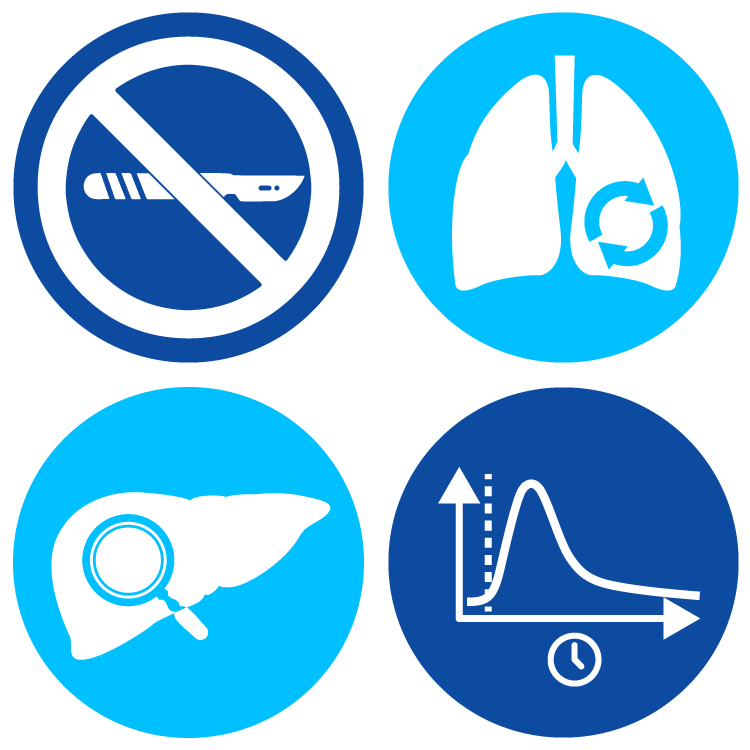
Exhaled Breath for Non-Invasive Exposure Research
A Powerful New Way to Discover Exposure Related Biomarkers
INTRODUCTION
The Impact of Exposures on Long-term Health
The WHO ranks environmental exposures among the top risk factors for chronic disease mortality and a major risk factor of non-communicable diseases (NCDs) such as cancer.
Exposure research has been historically limited to compounds which had profound and striking effects on individuals, with the less obvious impacts of small regular exposures not as widely explored. With the more recent recognition of the impact of everyday exposures on health and disease development, research in this area is now growing at an impressive rate.

In order to identify the connections between environmental exposure and disease, researchers in the field of exposure science are increasingly taking a holistic approach that requires the characterization of the totality of individuals’ exposures over the course of a lifetime.
This approach has become known as exposomics. Since these studies involve monitoring people over a lifetime they can be very long-running and are slow to produce results. Typically, this approach also involves the analysis of repeated samples to look for changes in exogenous compounds from exposures, and endogenous compounds linked to the effects of exposure on the body over time.
The Link Between Exposure and Inflammation.
Many environmental exposures can induce oxidative stress resulting in inflammation. Exposure to certain chemicals such as benzene, and halocarbons can result in adverse health effects recognized as manifestations of chemical toxicity. It is estimated that a significant number of global deaths are due to environmental risk factors from an unhealthy living or working environment with exposure to air, water, soil, and other chemical pollutants exposures results in poorer overall health, as well as increased risk of certain disease and injuries. The BTEX (benzene, toluene, ethylbenzene, and xylenes) compounds are common chemicals of interest in exposure studies, as long-term exposure to these compounds can have adverse health effects on organ systems in the body.
These adverse health effects often involve inflammatory states such as hepatitis, nephritis, and lupus, due to the production of reactive oxygen species (ROS). ROS are part of aerobic life. They have a central role in redox signaling, and at physiological levels, they are essential for maintaining cellular function. However, when overproduced, they can cause damage, contributing to the development of many different diseases. Intracellular glutathione (GSH), and vitamins C, E, and A, protect against ROS toxicity and inflammation. However, chronic inflammatory states may develop, including rheumatoid arthritis, atherosclerosis, diabetes, Alzheimer’s disease, and cancer.
WHY BREATH
Breath: A Non-Invasive Alternative to Sampling for Exposure Science
At the early stages of disease, characteristic disease biomarkers are normally only present at very low levels and often go undetected – Breath Biopsy can help change this.

Exhaled breath is a non-invasive alternative to blood sampling, providing a window into the body’s internal chemical environment. Breath contains volatile organic compounds (VOCs), which pass from the blood and from airways tissue. These could originate directly from external exposures or be downstream biomarkers of effect, related to internal process such as oxidative stress, lipid peroxidation, metabolism and inflammation.
Breath Biopsy® Products and Services provides a powerful way to non-invasively collect longitudinal measurements of exposure-related VOCs and non-volatiles in breath, and discover exposure biomarkers.
Discovering biomarkers that act as early indicators of hazardous exposures or pre-clinical signs of elevated disease risk could make it possible to move beyond diagnosis and treatment of exposure-related diseases into actual prediction and prevention of adverse outcomes.
Breath Biopsy for Exposure Research
Breath Biopsy provides a complete solution for collection and analysis of exposure biomarkers on breath. Collect samples with the ReCIVA® Breath Sampler and then choose to send them to our specialist laboratory for analysis or perform your own in-house investigations. By opting for the Breath Biopsy Laboratory, you gain access to our advanced HRAM TD-GC-MS platform, rigorous quality control pathways and the expert support of our team of analytical chemists and data analysts.
Our analysis can be used to detect a wide range of VOCs in breath, including VOCs commonly related to hazardous exposures such as benzene, toluene, ethylbenzene, and xylenes (BTEX) at sub parts per billion concentrations. Our protocols provide repeatability and reproducibility across the full breath sampling process from breath collection, to transport and sample analysis. Our advanced analytical capabilities also enable us to discriminate between closely related compounds across a wide range of concentrations.
If you’re involved in exposure research then contact us to discuss how Breath Biopsy could support your work.
CASE STUDY
Targeted Analysis of BTEX

BTEX compounds are known hazardous VOCs. Typically, sources of exposure to BTEX include smoking, vehicle emissions, solid fuel fires, and occupational exposure. Due to the widespread exposure and resulting serious health effects, they are obvious targets for biomonitoring. Owlstone Medical ran a targeted analysis for BTEX compounds on exhaled breath samples collected from 136 people.

The Breath Biopsy Platform was able to quantify BTEX in breath down to PPT concentrations (Figure 2). In this case, we were able to distinguish between smokers and non-smokers based on the concentration of benzene and other markers in breath. You can find out more about this work from our research poster.
Research Poster – Determining smoking status using VOCs from exhaled breath

.
CURRENT PROJECTS
Current Projects in Exposure Research
Exposome Project for Health and Occupational Research (EPHOR)

Owlstone Medical are part of EPHOR, an EU-funded consortium that aims to further investigate the complex relationships between environment and disease by developing the concept of the ‘working-life exposome’. This involves considering all occupational and related non-occupational exposures (e.g. lifestyle) throughout the lifespan of an individual, with the aim of identifying a panel of biomarkers related to lung damage for future research.
Exposome Project for Health and Occupational Research (EPHOR) Early Detection of Malignant Mesothelioma

We’re working with the IAHFIAW, a building trades union in the United States and Canada, to examine the chemicals found on the breath of individuals with documented historical exposure to asbestos. This work aims to identify and verify breath-based biomarkers for the early detection of malignant mesothelioma, a rare, aggressive and treatment-resistant cancer, caused almost exclusively by exposure to asbestos and asbestiform fibers.
OUR MISSION
Save Lives by Non-invasively Monitoring at Risk Individuals
Our mission is to save 100,000 lives and $1.5B in healthcare costs and long-term we expect our work in exposomics to contribute directly towards these goals.
Breath Biopsy has the potential to be a vital tool in the development of exposure research, ultimately helping to save lives from exposure-related disease and prevent the additional healthcare spending that’s required when these diseases are diagnosed late.
By discovering exposure related biomarkers we can then find ways to non-invasively monitor at risk individuals. This approach could make it possible to identify individuals that require attention before exposure-related disease even begins to take hold – potentially completely avoiding the need for more costly and invasive forms of intervention. This is exactly what our current work with the IAHFIAW, to identify breath biomarkers associated with malignant mesothelioma, aims to achieve.
We welcome the chance to discuss other opportunities to apply Breath Biopsy for exposomics.



